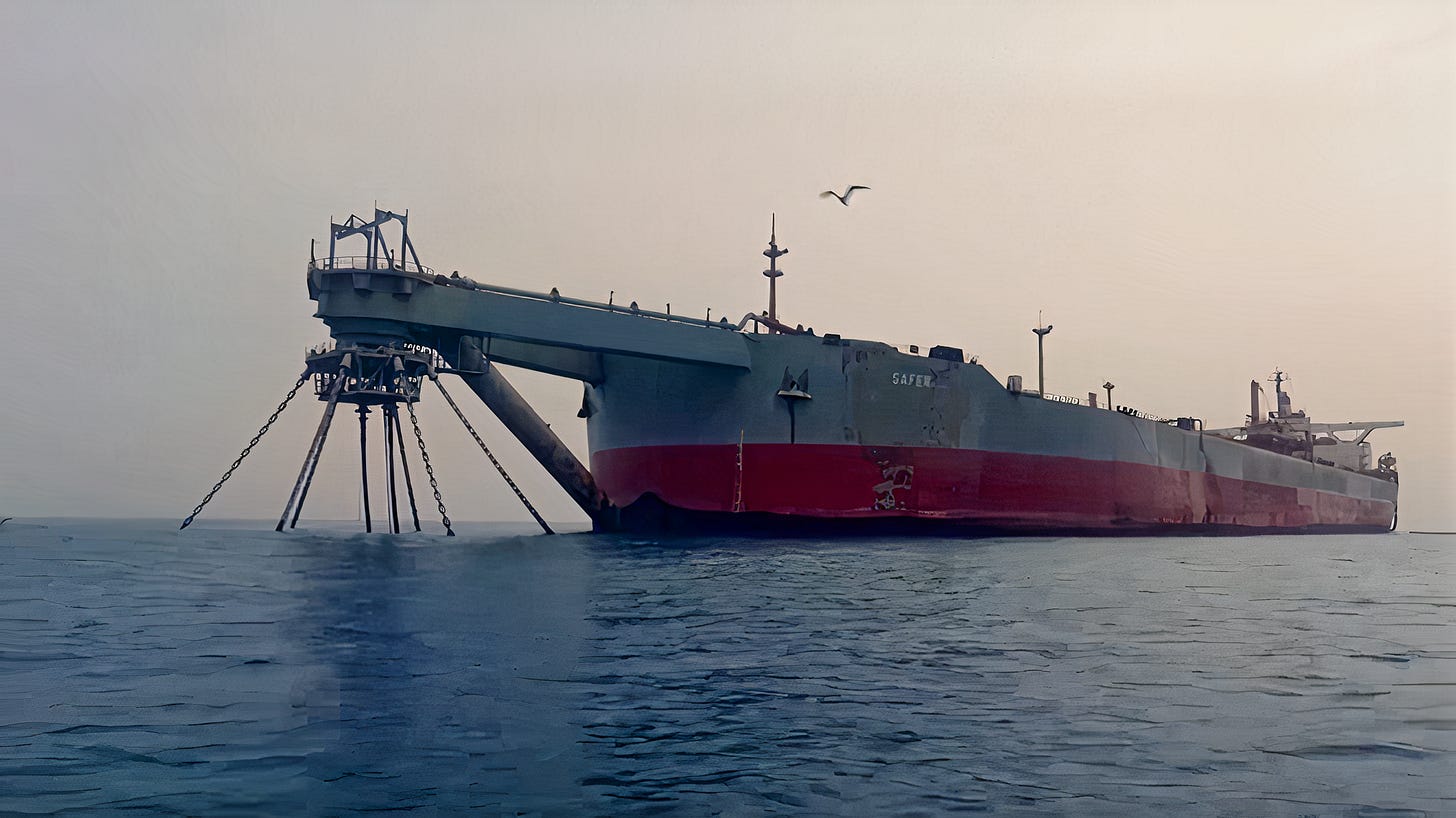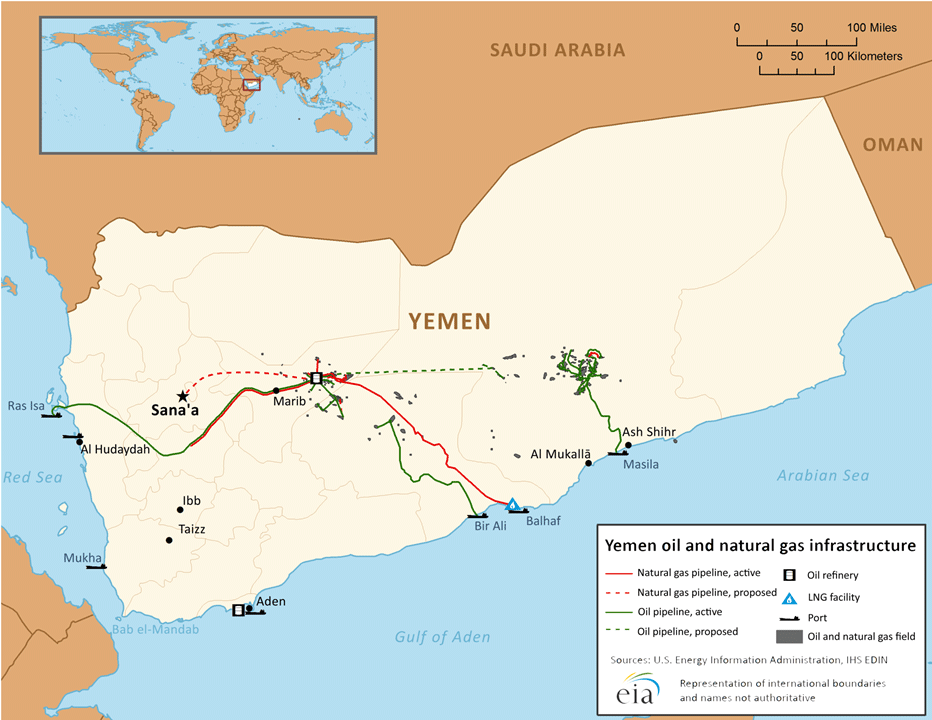Back in the 70s….
The F.S.O. Safer was originally built in Japan in 1976 as a crude oil tanker called the Esso Japan.
With a massive length of 350 metres (1,150 feet) and breadth of 70 metres (230 feet), and a Dead Weight Tonnage carrying capacity of just over 400,000 tons, it belonged to a category of oil tankers known as an Ultra-Large Crude Carrier (or ULCC). Used for long distance haulage of crude oil, they are the biggest class of tankers and do not move through either the Panama or Suez Canals. (For an overview of oil tanker classifications - see here.)
The Esso Japan saw service throughout the world’s oceans before finding a permanent home in the Middle East over a decade later.
… then the 80s
In 1986 it was renamed the Safer (pronounced ‘Saffer’) now under the flag of Yemen and was converted into a Floating Storage and Offloading unit (FSO), a couple of years later becoming permanently moored off the west coast of Yemen in the Red Sea across from Eritrea.
It is owned by the Yemeni state oil and gas company SAFER Exploration & Production Operations Company (SEPOC), who also operate the Ma’rib–Ras Isa oil pipeline which can carry up to 200,000 barrels of oil a day from the Ma’rib oil fields 440 kilometres (272 miles) away in Yemen’s interior. This pipeline connects up to the Ras Isa Marine Terminal from which the F.S.O. Safer, with capacity for up to three million barrels of oil, can be found five nautical miles away, itself connected by an underwater pipeline.
Its conversion into a storage, rather than transport, facility for oil, was to allow oil to be stored offshore until required and then transferred over to active oil tankers for voyage.
As described in great detail by Ed Caesar in the New Yorker article “The Ship That Became A Bomb” from October 2021, Hunt Oil Company, an oil exploration and development company out of Texas, discovered oil in Ma’rib in 1983. With only fifteen years left on the licence to get the oil out the ground, they reckoned that building an expensive onshore terminal was not worth it and instead came up with the idea to convert the Esso Japan essentially into a terminal, at a fraction of the cost.
The New Yorker article is worth the full read as it is a definitive chronicle of the highs of the F.S.O. Safer before things started to go wrong. Some key takeaways:
Hunt Oil Company, along with Exxon, built the pipeline from the oil fields to Ras Isa from 1984 to 1987.
A onshore terminal would have cost over 100 million dollars to build, the conversion of the Esso Japan a 12 million dollar bargain.
Safer “was outfitted with a rotating-front mooring system, so that the ship could swing around its bow, like a weathervane, whenever winds kicked up, reducing strain on the hull.”
It was a great place to work for locals and foreigners alike, during a time of peace for Yemen.
The Safer was starting to deteriorate in the late 1990s but managed to pass inspections.
Hunt Oil Company’s lease was extended from 2000 to 2005 but was not renewed and so SEPOC took over.
The need for an alternative onshore facility was becoming more apparent; after some false starts, work began on a terminal in 2012 but was never completed because of the war.
Up until 2014, SEPOC spent 20 million dollars a year on the Safer with staff of more than 50 (now there is a skeleton staff of only seven people).
Next time, we will look into the rapid decline in the F.S.O. Safer when the Houthis took over the area around 2014.




